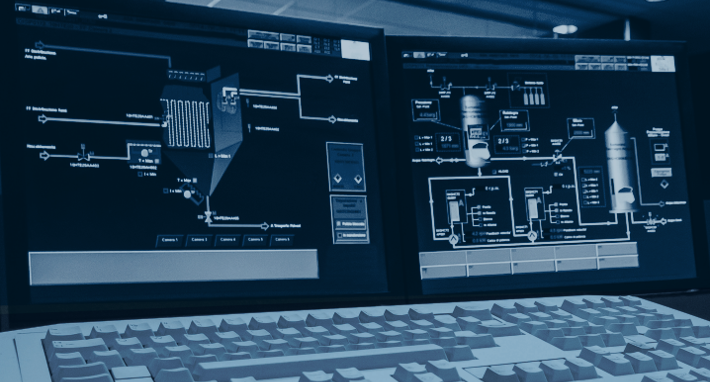Since HMI screens are intended to only display critical data, graphic design isn’t usually much of a priority. However, as the amount of on-screen information increases, a basic understanding of graphic design becomes very important. By avoiding or removing visual clutter, you can empower the user to make quick and accurate decisions by seeing the most important information right away.
Here are three great tips for keeping your HMI design uncluttered.
Tip 1: Plan Your HMI Design Layout Ahead of Time
Planning out your HMI design will save you time and headaches. It’s tempting to start dropping elements onto your screen, but without a plan your HMI design will become cluttered. Ideally, the user should be able to decipher the most important information from the HMI at a glance, but that won’t be possible if the HMI is too busy or cluttered.
Planning affords you the opportunity to ask important questions, such as:
- What purpose does this particular HMI view serve?
- Can I move certain items to another view?
- How can the user be more effective with this HMI?
Asking these important questions help to create a solid HMI design that engages the user and improves his accuracy.
Tip 2: Remove Unnecessary Animation
As a general rule, you shouldn’t use animation in your HMI design. Animation is often a distraction rather than a benefit to the user. If animation is absolutely necessary, then make sure it is minimal and not intrusive. The goal is to communicate clearly with the user and enable him to take the appropriate actions.
Tip 3: Get Rid of Unnecessary Details
It’s easy to get wrapped up in the visual details of the graphics, such as shapes, colors, shading and other fine detail. While this may improve the look of the visual design, you must ask the important question: will these visual elements provide value?
Getting rid of unnecessary visual detail helps improve the user’s interaction with the HMI. The example shows a comparison between a cluttered design and a simplified yet highly impactful design. In the simplified design, unnecessary details such as gradients, cut-aways, fine detail, and non-essential components are removed while retaining all of the important components. By following these tips, you can remove visual clutter and help reduce the user’s cognitive load. The goal is to clearly communicate the most important information and to guide the user to take clearly defined actions. Users are empowered to make better decisions when you plan and simplify your HMI design.
Need help with your next SCADA project – why not ask VisiPraxis for assistance to find out how we can save you money and reduce your project risk making use of an unlimited tag, unlimited HMI SCADA deployment model.


